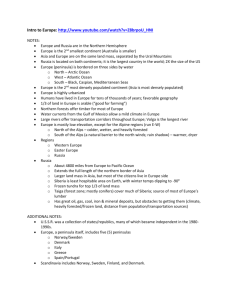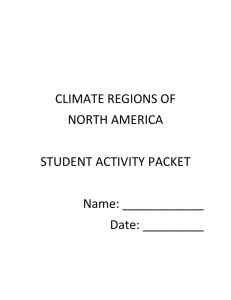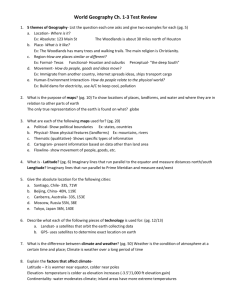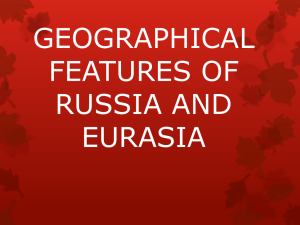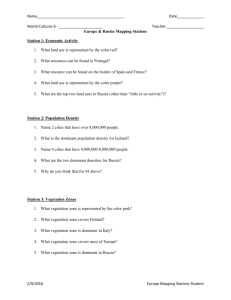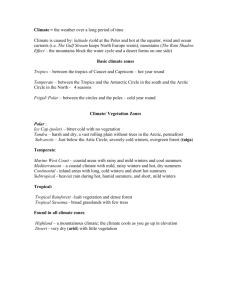Chapter 6 ~ Lesson 2~ Climate and Vegetation
advertisement
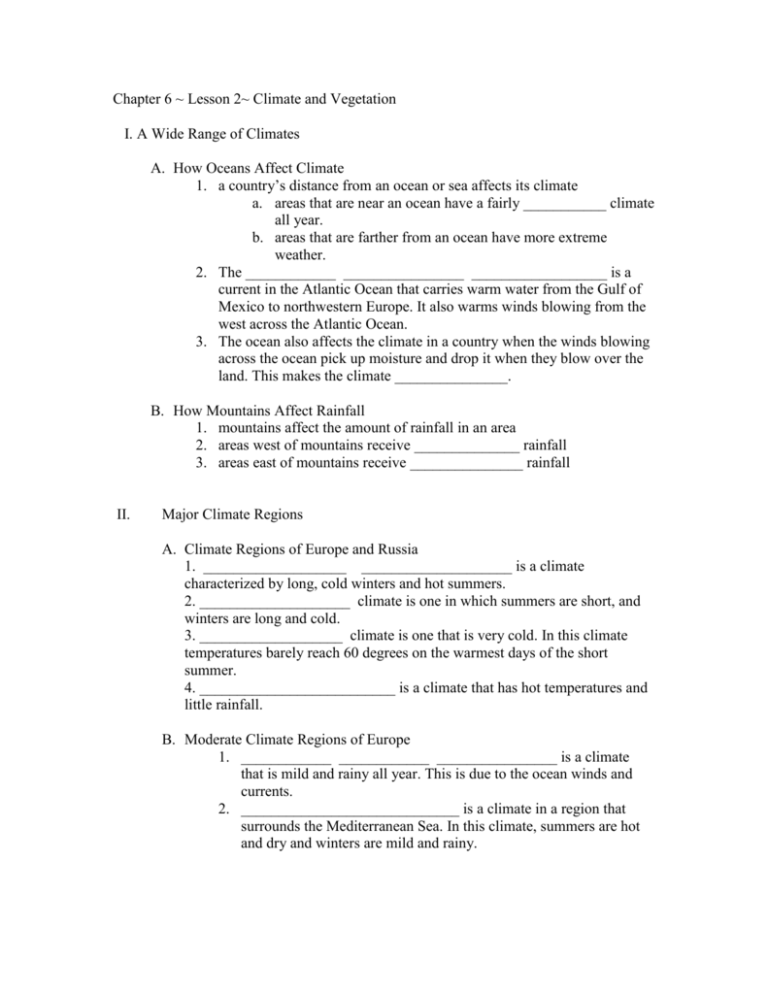
Chapter 6 ~ Lesson 2~ Climate and Vegetation I. A Wide Range of Climates A. How Oceans Affect Climate 1. a country’s distance from an ocean or sea affects its climate a. areas that are near an ocean have a fairly ___________ climate all year. b. areas that are farther from an ocean have more extreme weather. 2. The ____________ ________________ __________________ is a current in the Atlantic Ocean that carries warm water from the Gulf of Mexico to northwestern Europe. It also warms winds blowing from the west across the Atlantic Ocean. 3. The ocean also affects the climate in a country when the winds blowing across the ocean pick up moisture and drop it when they blow over the land. This makes the climate _______________. B. How Mountains Affect Rainfall 1. mountains affect the amount of rainfall in an area 2. areas west of mountains receive ______________ rainfall 3. areas east of mountains receive _______________ rainfall II. Major Climate Regions A. Climate Regions of Europe and Russia 1. ___________________ ____________________ is a climate characterized by long, cold winters and hot summers. 2. ____________________ climate is one in which summers are short, and winters are long and cold. 3. ___________________ climate is one that is very cold. In this climate temperatures barely reach 60 degrees on the warmest days of the short summer. 4. __________________________ is a climate that has hot temperatures and little rainfall. B. Moderate Climate Regions of Europe 1. ____________ ____________ ________________ is a climate that is mild and rainy all year. This is due to the ocean winds and currents. 2. _____________________________ is a climate in a region that surrounds the Mediterranean Sea. In this climate, summers are hot and dry and winters are mild and rainy. 3. _____________________ ______________________ is a climate that is located in southern Europe. It is characterized by warm temperatures and year-round rainfall. III. Natural Vegetation Regions 1. natural vegetation or plant growth is varied in Europe and Russia. 2. vegetation regions are related to climate regions. 3. There are four major vegetation regions in Europe and Russia. They are __________________, __________________, ______________, and _____________________. A. Forests of Europe and Russia 1. the natural vegetation of much of Europe is forest. 2. there are two types of forests in Europe and Russia. a. _________________ forests are ones that have trees that produce cones. b. _________________ forests are ones that have trees that lose their leaves in the fall. 3. Largest forest in the world that is in Siberia ~ Taiga B. Grasslands of Europe and Russia. 1.grasslands are also known as _________________. 2. grasslands are used for ______________________ 3. ________________________ are grasslands in Russia. 4. They are good for _________________ because of the fertile soil. C. Mediterranean Regions of Europe 1. Mediterranean vegetation is located in countries near the ___________ Sea. D. Tundra of Europe and Russia 1. __________________ a cold, dry treeless region that is covered with snow for most of the year. Winters last as long as nine months and the ground contains __________________ which is a layer of permanently frozen ground below the top layer of soil. 2. few people live in the tundra region.
